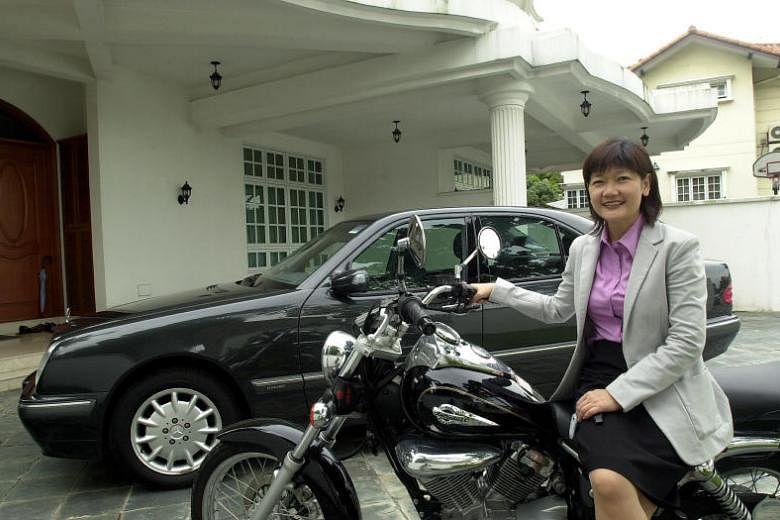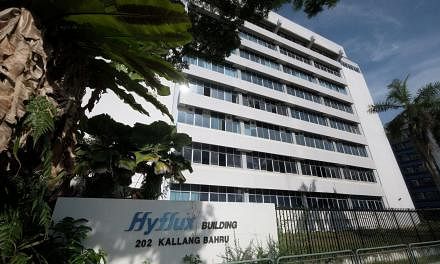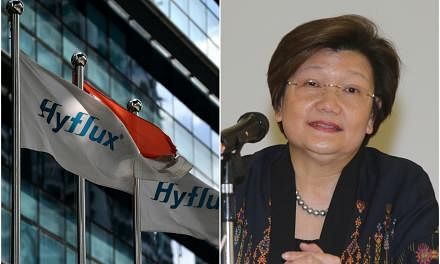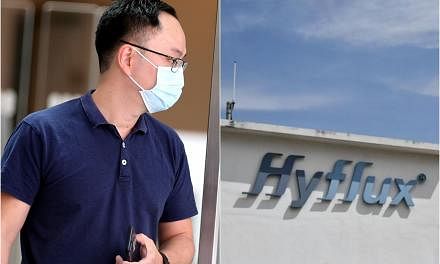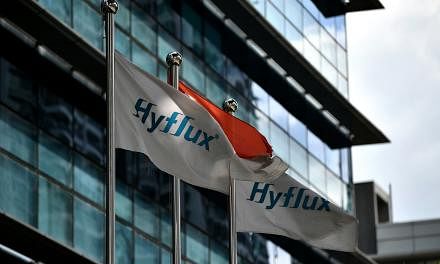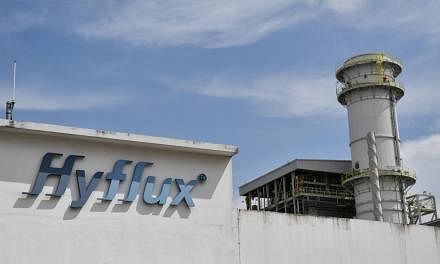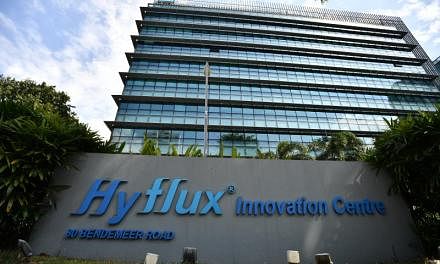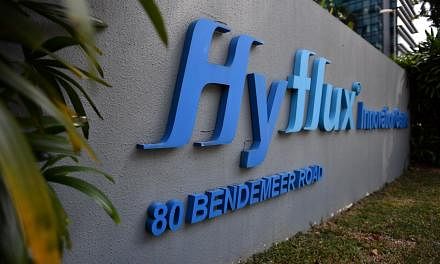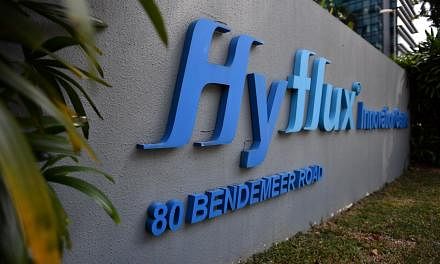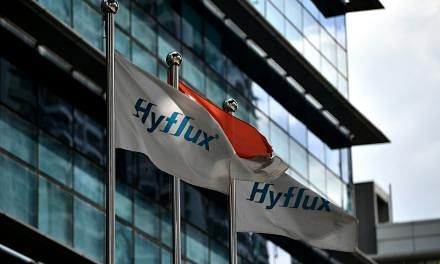SINGAPORE - Once upon a time, it seemed she rode a perpetually cresting wave from one success to the next.
But now, Hyflux chief executive Olivia Lum can only watch as the water treatment firm she founded 30 years ago struggles not to drown.
On Saturday (Feb 16), Ms Lum volunteered her entire stake of 267 million shares and securities - about 34 per cent of Hyflux's ordinary shares - as part of a proposed restructuring plan for the beleaguered company, which is now insolvent.
About a week before, the Securities Investors Association (Singapore) had raised a slew of questions, including Ms Lum's "large remuneration, even as the firm racked up debt and losses, and the "faults and defects" in its assets.
Here are six things about the embattled CEO's life.
1. Small-town orphan in a big city
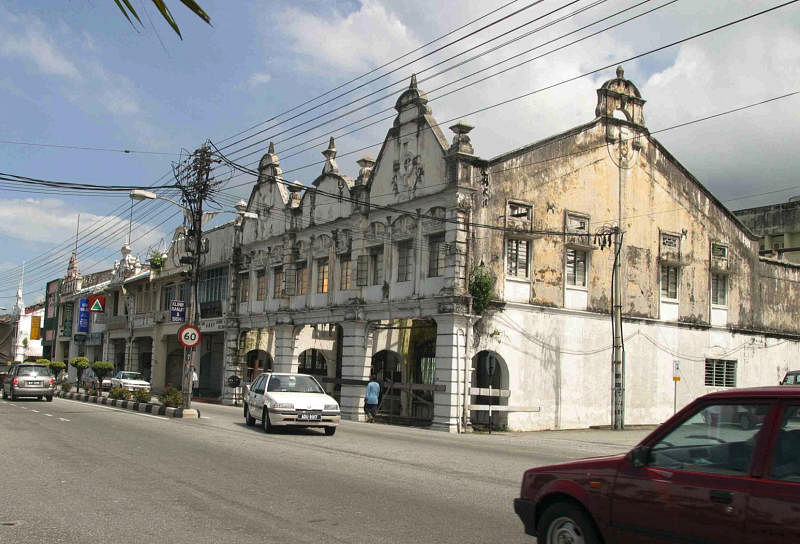
Olivia Lum was born in a small town called Kampar, in Perak, Malaysia.
Abandoned at birth, she was brought up by an illiterate Chinese woman - "Grandmother" - who doted on her but had a weakness for gambling and would play mahjong for as long as 10 hours every day.
"Most of the time she lost money," she told The Straits Times in an interview in October 2001.
"I was always worried that one day she would lose all her money, and we would have no home, no food."
It was also a town where many experienced hard times.
"I came from a small town where many people were not doing well. I saw them struggle. I considered myself fortunate to be able to study and to like to study," Ms Lum said.
And study she did. She did so well that her school's deputy principal said she should think about going to a big city like Kuala Lumpur or Singapore.
1n 1977, at Secondary 3, she took the advice and with little more than the blessing of her grandmother and relatives, headed for Singapore.
The gutsy 16-year-old sought out three women who used to be her neighbours and who had come to the Republic to find work on construction sites.
They let her share their rented room in an old shophouse while she continued her schooling at the then Tiong Bahru Secondary School.
Her O-level exam results were good: 6 As and 2 Bs. She secured a place in the top-ranking Hwa Chong Junior College.
But her young life took a turn for the worse when her grandmother fell ill and was hospitalised for nearly a year.
"Almost every weekend, I would ride my bike up to the hospital in KL. Sometimes, when I felt too tired, I took a train or night bus. It was traumatic," she said.
Eventually, she arranged for her grandmother to be hospitalised in nearby Johor Baru. While sitting her A-levels, her grandmother died.
"I remember sitting my biology paper. Halfway, I couldn't continue the exam. I was crying and the papers were becoming wet with tears."
Nevertheless, she managed to get A-level results that clinched her a spot to study chemistry at the National University of Singapore - the place that would pave the way for her later successes.
2. An entrepreneur since young
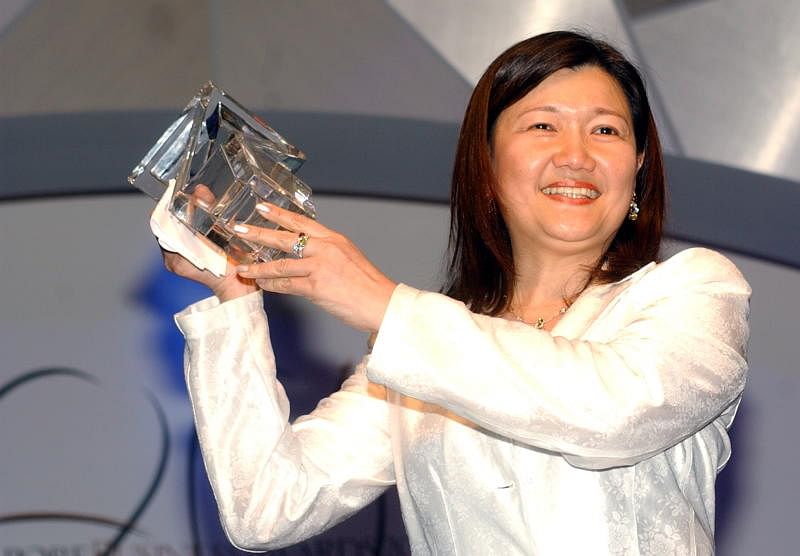
Even as a secondary school student in Malaysia, Ms Lum was a shrewd businesswoman.
Worried that her grandmother's gambling habits were endangering the household's finances, she started selling gifts she received during festive periods and taking sandwiches from home to sell to her classmates.
"I didn't eat any of the sandwiches as I didn't want to lose the opportunity to sell every one of them. I became very skinny," she told ST in 2001.
One day, her fears came true. The family was forced to downgrade from their terrace house with a garden to a small wooden house.
But the experience made her even more determined: "All I cared then was to make as much money as I could in case my grandmother gambled away all her money."
Her business acumen was recognised in secondary school by the husband of one of her teachers. He gave her pairs of jeans to sell for a commission to her schoolmates.
When she moved to Singapore, she covered fees for school and paid the rent by giving tuition.
"Immediately after school, I would rush off. I had two or three groups of pupils a day," she said. She even bought a motorcycle to travel faster to her students' homes.
On weekends, she worked as a promoter in department stores, peddling anything from cosmetics to smoke detectors.
"It was a good experience. I learnt how to approach people and gauge their response," she said.
In the six months or so before her first year of university, she was once again working hard.
While her classmates went on holidays, she was knocking on doors in Housing Board estates, selling insurance, cosmetics, flower pots, souvenirs, among other things.
With the profits, she struck up a partnership to run a canteen at construction sites - first in Katong and then in Bukit Timah.
"I helped out after lectures," she recalled. "There were busy times such as 3pm and 5pm when the workers took their breaks."
3. The start of something big
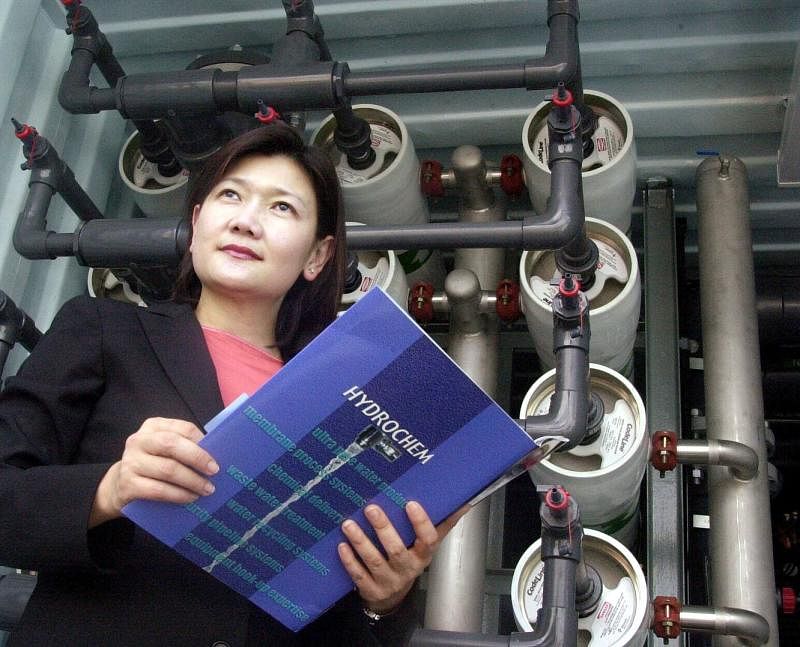
Before she finished her university exams, she was offered a job as a chemist by industry giant Glaxo Pharmaceuticals.
Even then, she already had ambitions of being her own boss. But that had to wait: The year was 1986 and the economy was mired in a recession.
Her chemist job allowed her to buy a condominium in Bayshore within months for just around $210,000 with no down payment.
But more importantly, her job allowed her to learn about how industrial water is treated before it is discharged. In this, she saw an opportunity.
After three years at Glaxo, she took the plunge.
She raised funds by selling her condo unit for a profit, paid off her car loan and moved into a rented HDB flat.
And so at 28, Ms Lum set up her own business: Hydrochem.
She pooled together $20,000 in starting capital, which she used to set up shop in a cramped office in Tampines Industrial Park with one clerk and one technician.
Trying to sell equipment for treating water was tough but not enough to shake her resolve.
Since firms in Singapore did not want the risk of dealing with someone new and unknown, she turned her attention to Malaysia and Indonesia.
At dawn, she would drive out to the textile factories in Batu Pahat in Johor to peddle her wares.
"I almost gave up in the first year," she told ST in 2001. To improve her cash flow, she sold her car and settled for a motorcycle.
But the tough early days would soon bear fruit.
4. 2001: 'I always knew I would make it big'
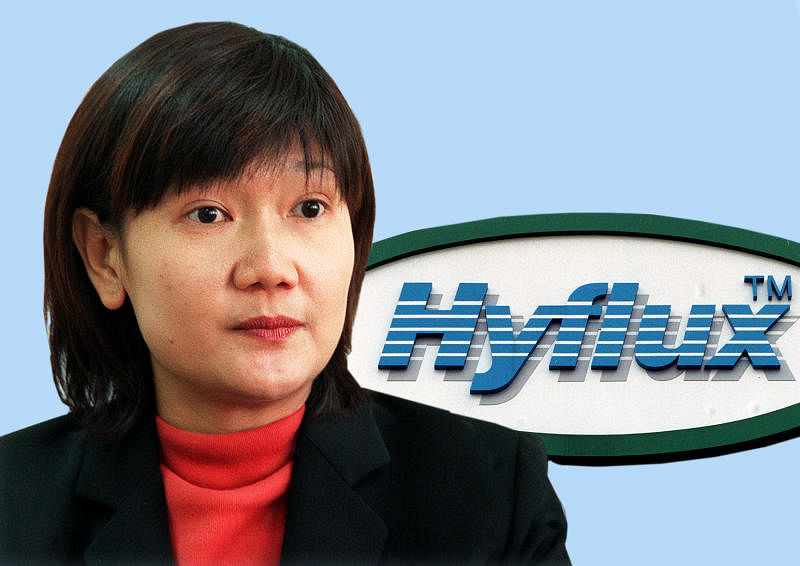
In the 90s, Hyflux ventured into China, securing several deals, investing in proprietary technology. But the big year for Ms Lum was 2001.
In January 2001, on her 40th birthday, Hyflux launched its initial public offer on the Singapore Exchange's Sesdaq board.
The stock rocketed, climbing 131 per cent.
That $20,000 she put into the company she started multiplied in the dozen years since 1989 to become around $70 million.
Her clients included multinational companies such as STMicroelectronics, Hitachi Chemical Asia-Pacific and Sanyo Air-Conditioners Manufacturing, and even Jurong Bird Park.
But 2001 was also a landmark year for other reasons.
It was in that year that Ms Lum's firm won the tender to supply and install equipment for the country's first Newater plant.
Hyflux developed the membrane technology that made it possible for Singapore to recycle water, resulting in the water now synonymous with Singapore and served at important events like National Day.
The technology also put Singapore on the map as a global hub for water management and treatment - a position it still enjoys today with water standards that exceed the World Health Organisation's.
In 2001, she also became a Nominated Member of Parliament, marked as a star in the large push to spur innovation and grow Singapore's small and medium-sized enterprises.
"I always knew I would make it big," said the soft-spoken Ms Lum in 2001. And she did.
This recognition would be one of many for the entrepreneur, who won Her World magazine's Woman Of The Year award in 2003.
By 2005, she had a net worth of over US$240 million, which earned her a place as the only woman on Forbes' South-east Asia Rich List.
She was also ranked 17th in Forbes magazine's first Singapore rich list in 2006, and Forbes list of Asia's top 50 businesswomen in 2012.
5. Close shaves with death
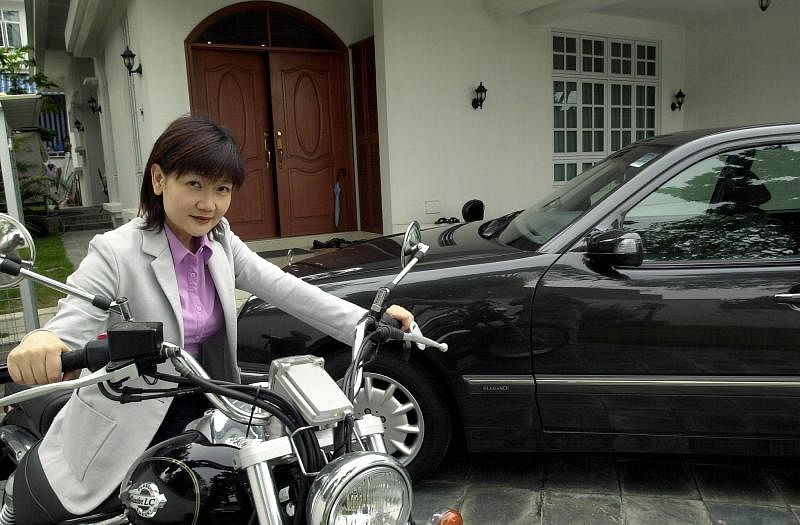
A Straits Times report in 2001 said of Ms Lum: "She was willing to travel to - and brave uncertainties in - outlying places to explore and do business."
This was an understatement.
She recalled a trip in 1991 on an old plane to an Indonesian town so remote she could not recall its name.
There were 10 passengers and as the plane started, the noise from the engine was deafening.
As it taxied to take off, one of its propellers malfunctioned.
"The pilot was so calm, left his cockpit, opened a window and used a broom stick to force the propeller to turn! The plane was already speeding and I was so frightened, I thought this was my last day alive."
He managed to get back to the cockpit in time and the flight turned out all right.
Ms Lum's experiences with water were not just in the lab.
On another trip, this time to the Maldives, she found herself in the uncomfortable position of the lone passenger in a boat manned by two men.
Worse, a storm broke during the four-hour trip to an island. Sea water gushed through a crack that had opened up in the bottom of the boat.
"For hours, I had to help bail out the water. I thought I'd be very grateful to survive the trip."
6. Getting help, giving back
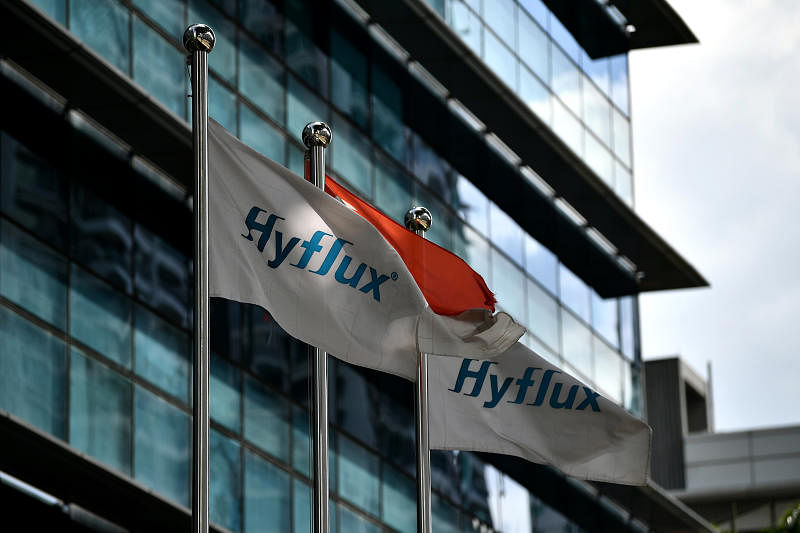
In 1995, three chemistry professors saw the potential in Ms Lum's business and injected hundreds of thousands of dollars to help it expand into China.
Their investments were worth five times as much after five years.
Then NUS Professor Wong Ming Keong was her supervisor in her Honours year and again during her master's degree course.
He invested around $100,000.
The professor not only said yes but persuaded colleagues Gan Leong Ming and Koh Lip Lin to do so too.
Prof Gan, who was Ms Lum's co-supervisor, said: "We talked about it, and thought it was worth the risk."
Prof Wong was especially hopeful. Ms Lum had impressed him: "She was a quick thinker and efficient worker - and very independent too."
On her quitting her master's course, Prof Wong said: "I encouraged her to stop her course. I said: 'Once your business is successful you can hire professors and PhDs to work for you'."
And as it turned out, she did hire a PhD graduate, in 1999, to be Hyflux's research and development manager.
